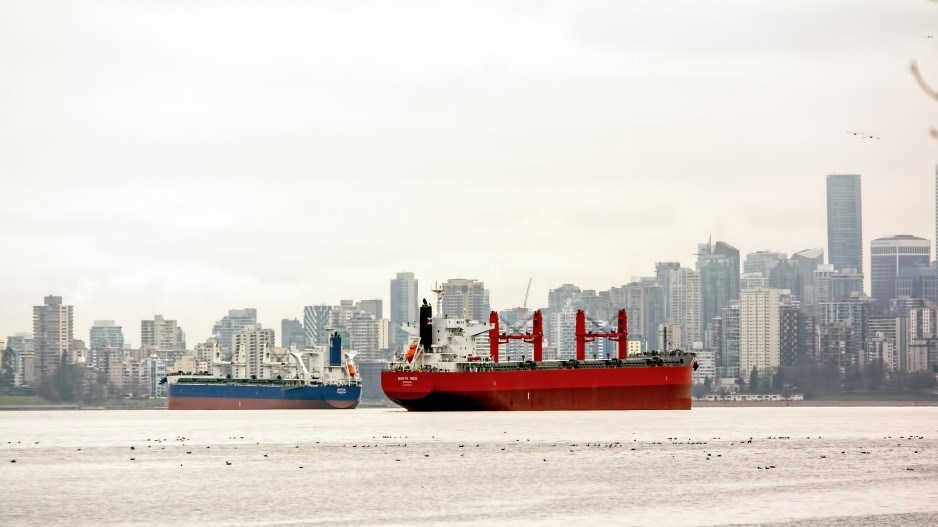Canadian shippers and consumers could soon be feeling the ripple effect of attacks on cargo vessels in the Red Sea, as freight rates rise and delivery times lengthen.
Shipping firms across the globe are turning away from the key trade corridor after Houthi militants in Yemen stepped up attacks on commercial boats in the region to protest against Israel's military campaign in the Gaza Strip.
Shipping giant Maersk said Friday it plans to continue rerouting all vessels bound for the Suez Canal around Africa's Cape of Good Hope "for the foreseeable future," following an earlier pause through the waterway linking Asia and Europe.
Other shipping companies, including MSC — the world's biggest container shipper — Hapag-Lloyd and Evergreen, have also suspended passage through the Red Sea's Bab el-Mandeb Strait, the focal point of dozens of attempted missile and drone strikes against cargo boats.
The route change adds one to three weeks and hundreds of thousands of dollars in extra fuel and labour costs per trip, resulting in potential price increases for wholesale and retail products. A voyage from Singapore to Rotterdam in the Netherlands would take 26 days, while going around the southern tip of Africa would tack on 10 more, according to Werner Antweiler, chair in international trade policy at the University of British Columbia's Sauder School of Business.
Europe will feel the impact most directly, says Université Laval business professor Yan Cimon. But consumer goods and some manufacturing parts destined for Canada also come via the canal, which carries roughly a third of global container traffic.
"Obviously we do significant trade with Europe, and we also import some commodities from Asia that may go through Suez," Cimon said.
"The shippers themselves will see also a big strain on their shipping capacity, because as ships are tied up through longer routes, they cannot be used on other routes."
Global container shipping rates surged 61 per cent in the past week alone, with hikes on service between Asia and North America as well, according to data from Drewry, a maritime industry research firm. Since Nov. 30, global rates have surged 93 per cent to US$2,670 per 40-foot container from US$1,382.
A severe drought in Panama has amplified the impact of the Red Sea no-go zone.
Many shipping services between Asia and North America's east coast had recently switched to the Suez Canal, instead of travelling the usual route across the Pacific Ocean and through the Panama Canal.The drought has sapped the canal of water, which is used to raise and lower ships at a dozen locks, prompting officials to cut the number of boats they let through the Central American waterway. The slashed slots have boosted fees and bottlenecks at the critical trade conduit between the Atlantic and Pacific Oceans and pushed some oil tankers and container ships to steer clear of the back-up by taking longer routes — typically via the Suez Canal.
Now, the Red Sea crisis is further affecting shipping costs. Since the beginning of December, rates rose 86 per cent for freight shipped from Southeast Asia to U.S. East Coast ports, and two-thirds from North Asia, according to data provider S&P Global Platts.
Even for cargo bound for the U.S. West Coast, rates jumped 81 per cent from Southeast Asia and 78 per cent from North Asia, illustrating the knock-on effects across the shipping world.
"Canada is, you could say, somewhat lucky that it's geographically dependent on North American and other global supply chains. Yet that doesn't mean we're not at risk," Cimon said.
This report by The Canadian Press was first published Jan. 5, 2024.
Christopher Reynolds, The Canadian Press




